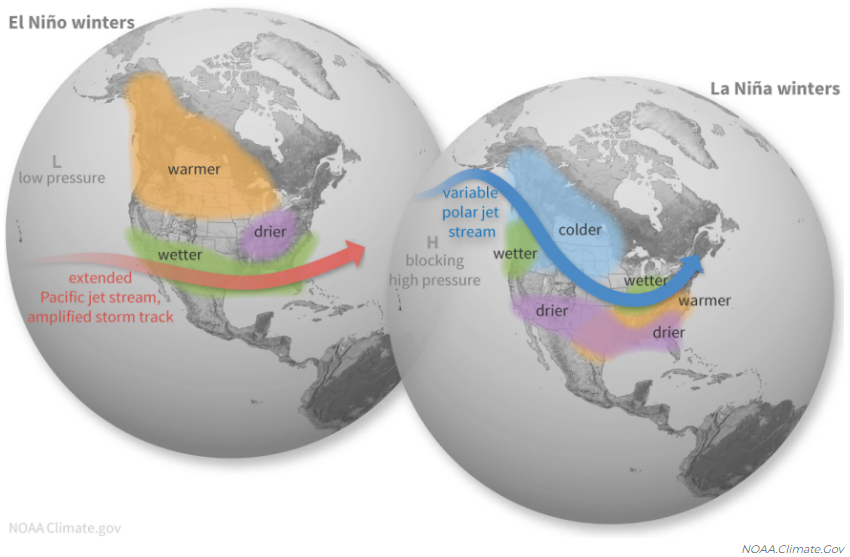WASHINGTON (AP) - After three nasty years, the La Nina weather phenomenon that increases Atlantic hurricane activity and worsens western drought is gone, the National Oceanic and Atmospheric Administration said Thursday.
That’s usually good news for the United States and other parts of the world, including drought-stricken northeast Africa, scientists said.
The globe is now in what’s considered a “neutral” condition and probably trending to an El Nino in late summer or fall, said climate scientist Michelle L’Heureux, head of NOAA’s El Nino/La Nina forecast office.
“It’s over,” said research scientist Azhar Ehsan, who heads Columbia University’s El Nino/La Nina forecasting. “Mother Nature thought to get rid of this one because it’s enough.”
La Nina is a natural and temporary cooling of parts of the Pacific Ocean that changes weather worldwide. In the United States, because La Nina is connected to more Atlantic storms and deeper droughts and wildfires in the West, La Ninas often are more damaging and expensive than their more famous flip side, El Nino, experts said and studies show.
Generally, American agriculture is more damaged by La Nina than El Nino. If the globe jumps into El Nino it means more rain for the Midwestern corn belt and grains in general and could be beneficial, said Michael Ferrari, chief scientific officer of Climate Alpha, a firm that advises investors on financial decisions based on climate.
When there’s a La Nina, there are more storms in the Atlantic during hurricane season because it removes conditions that suppress storm formation. Neutral or El Nino conditions make it harder for storm to get going, but not impossible, scientists said.
Over the last three years, the U.S. has been hit by 14 hurricanes and tropical storms that caused a billion dollars or more in damage, totalling $252 billion in costs, according to NOAA economist and meteorologist Adam Smith said. La Nina and people building in harm’s way were factors, he said.
La Nina has also slightly dampened global average temperatures, keeping warming from breaking annual temperature records, while El Nino slightly turbocharges those temperatures often setting records, scientists said.














